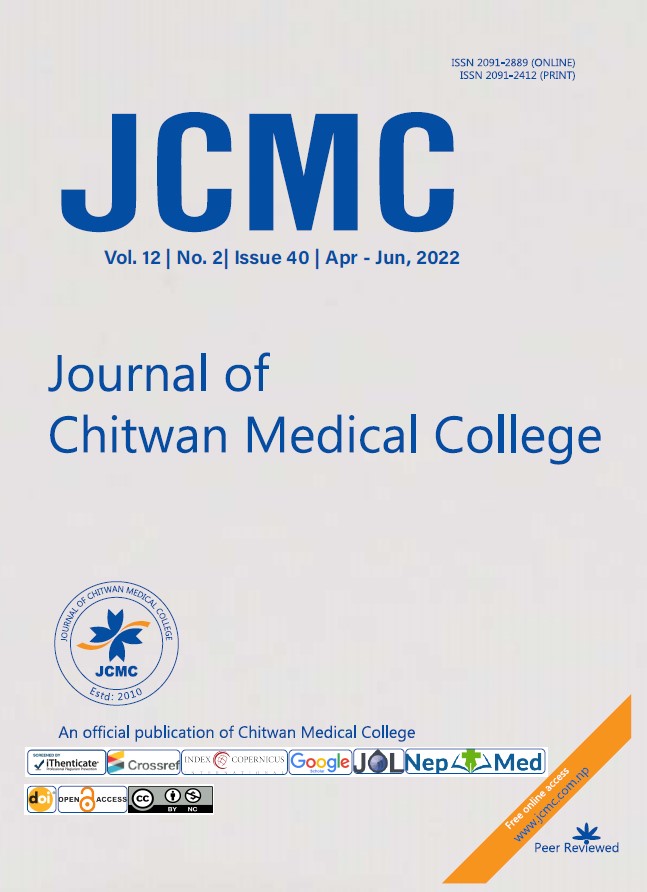MATERNAL AND FETAL OUTCOME IN PREGNANCY BEYOND THE EXPECTED DATE OF DELIVERY IN A TERTIARY CARE HOSPITAL OF NEPAL
Keywords:
Fetomaternal complications, LSCS, Me- conium-stained liquorAbstract
Background: The risk to the mother and the fetus increase with advancing gestation age. Our study aims to study the maternal and fetal outcome in pregnancy extending beyond the expected date of delivery so that safe timings of induction and appropriate mode of delivery can be determined.
Methods: We conducted a retrospective study of 152 patients with pregnancy beyond the expected date who presented to the department of Obstetrics and Gynecology, College of Medical Sciences Teaching Hospital from the time period of October 2019- November 2021.The primary outcome measures were obtained in terms of rate of cesarean section, postpartum hemorrhage, wound infection, admission in neonatal intensive care unit, birth asphyxia and meconium aspiration syndrome. Statistical analysis was performed using Chi-square test with P value <0.05.
Results: The majority of 86 (56.58%) patients were between 40-41 weeks of gestation. Maximum number of vaginal deliveries were seen between 40-41weeks (77.90%). Overall cesarean section rate was 40.13% with maximum number between 41-42 weeks (64.28%). Fetal distress with meconium-stained liquor was the most common indication (36.06%). The rate of neonatal intensive care unit admission was 16.44% with birth asphyxia (12.50%) and meconium aspiration syndrome (8.55%) as the primary cause for admission. Maternal complications like oligohydramnios, postpartum hemorrhage, wound infection, cervical tear, shoulder dystocia was seen in 16.45%, 1.97%, 1.97%, 2.63% and 1.31% respectively.
Conclusions: The pregnancy beyond the expected date causes definite risk to the mother and the fetus. Therefore, strict fetal surveillance with early induction of labor prior to expected date of delivery is recommended for better fetomaternal outcomes.





